Planning to reuse all of those expensive baby items for your second baby? Putting away your stroller for the winter? Wanting to resell your high end baby clothes but don’t have the time right now? Saving your baby gear (and other items) is a cost effective, eco-friendly way to pass down pre-used, barely worn, and lightly loved baby items.
So, what is the best way to store baby items? What should you toss, what can you save and what’s best to donate? As a general rule, bottle nipples, pacifiers, some breast pumps and parts, and food and medicine items should not be saved. Everything else is fair game for saving and storing, or donating!
Evaluate your items prior to storage to make sure you’re keeping only top quality items that you’ll want down the road. Make sure that everything is in good condition, has all the pieces, hasn’t been recalled, is in working order and is free of significant damage.
Here are the best ways to store baby items for future use:
Best way to store clothes:
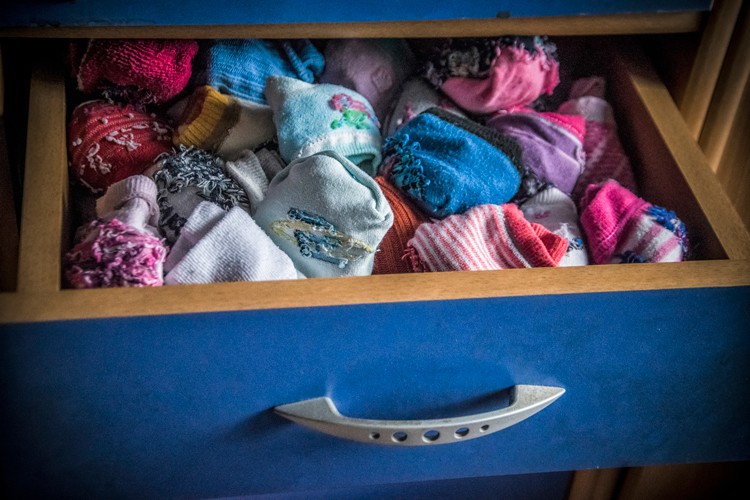
Sort through your baby clothes and make one pile of items that can be tossed, one pile that can be donated and one pile that you want to keep. Toss everything with staining, holes or rips, and donate things that you never liked or that you have way too many of (hello, 2500 little baby socks, you’re cute but I don’t need all of you!). Next, launder all of the clothing you want to keep with a baby safe detergent and dry completely. Any amount of moisture left can equal mold and mildew.
To make unpacking and finding things easier when you’re ready for them, sort clothes by size and pack each size in a separate vacuum sealed bag. Resealable bags make a great (and cheap) alternative to vacuum sealing. For added security, you can layer clothes with archival tissue paper to prevent moisture accumulation and add a scented satchel to keep fabric fresh. Label each bag with the size and type, and store baby items in boxes or tubs with well fitting lids. Loose lids allow for bugs and critters to make cozy homes and holes out of your precious baby clothes. You’ll want to avoid that!
If you are planning to store baby items in boxes in the attic or basement, plastic tubs made of polypropylene are best at keeping moisture at bay. Consider temperature and humidity when deciding where to store your baby’s clothes. Sunlight can quickly bleach and fade fabrics, and garages see a range of temps that may degrade some materials.
Best way to store strollers:
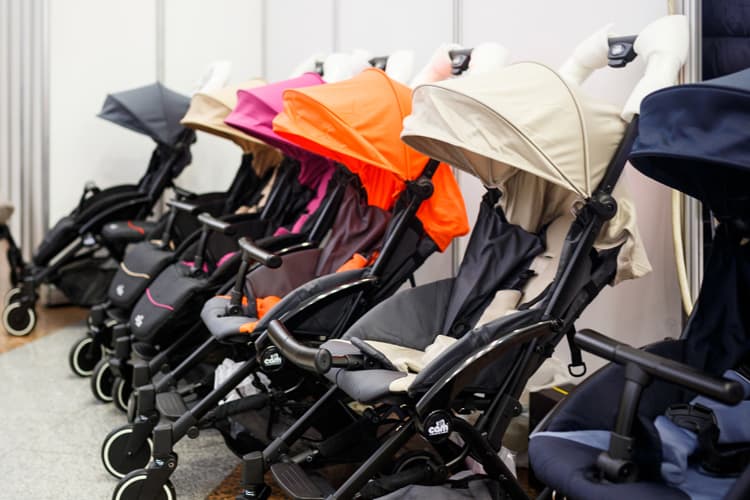
Strollers can take quite a beating and still keep on rolling. But some precautions should be taken prior to storing your baby’s ride away for the winter or until a new brother or sister comes along. Before packing up and storing your stroller, give it a thorough cleaning. Crumbs, gummy bears, Cheerios or whatever else may be lurking in those hidden seams are breeding grounds for mold, bacteria, and *gasp* bugs!
Try to get out as much staining prior to storage as possible. Stains like sunscreen, mud, and potty accidents are much harder to get out the longer they sit, so removing them now is key. After wiping, scrubbing and/or steaming, allow the stroller, fabric and all attachments to thoroughly dry. Any amount of moisture can lead to mold, mildew, and rust; possibly rendering the stroller unusable.
If you just don’t have the time, tools or energy to do a heavy deep cleaning, consider hiring a company, like BabyQuip Cleaning. Their certified cleaners spruce up your stroller and sanitize it for you! Having a professional clean and detail your gear can offer peace of mind, knowing your baby gear is storage ready.
Storing your strollers in an easily accessible location makes the most sense, in case you may need it for a 4 year old who swore off strollers two years ago but suddenly forgets how to walk! Dreambaby StrollAway Over the Door Stroller Hangers are a great way to stow away strollers behind a closet or bedroom door.
For longer term storage, ladder hooks screwed into the wall of a garage or basement will help to keep strollers up off the ground, deterring pesky critters from crawling inside. Cover your strollers with large, clean sheets, to protect from dust, light, and moisture. Remove all accessories, like guard bars, snacks trays, and adapters, and store them in the stroller’s basket in an airtight bag. This will prevent any damage that may come from folding the stroller with the accessories attached while keeping all the parts together.
Related articles:
- Best Cleaning Services for Busy Parents
- Things You Can Teach Kids to Clean So You Don’t Have To
- What to Clean When Your Child is Sick
- How to Keep a Clean Car with Kids: 7 Simple Tips
- Where to Get Baby Gear Cleaned
Best way to store car seats:

Car seats are necessary safety devices and extreme care must be taken prior to storing them away for the next baby. Prior to storing, give your car seat and base(s) a good cleaning. Any crumbs, spilled milk, crackers, or other hidden gems are bacteria and mold magnets. Remove the cover from the car seat (if applicable) and shake out any loose material from the plastic base. Always clean your car seats according to the manufacturer’s instructions, or leave it to the gear experts at BabyQuip Cleaning. Depending on how deeply you clean your car seat, ensure that the seat and all accessories that you plan to store with it are clean and dry before packing them up.
Determining where to store baby items like your car seat and base is important. Keep in mind that garages or unfinished basements can be damp. Garage floors are affected the most by temperature changes and car seat frames need to be treated carefully. Be careful not to store baby items, especially the car seat, in the sun or direct light, as that can damage the fabric and bleach the plastics. If possible, store car seats in their original boxes, in a sealable plastic bag. If you don’t have the original packaging, store car seats on shelves, cabinets, or up off the ground.
Mark the expiration date on the outside of the bag you seal the car seat in and toss the car seat out when the date has passed. Inspect the car seat again when taking it out of storage. Any mold, cracks, or damage could render the car seat unusable. Check for recalls prior to resuming usage of the seat and give it a good vacuum and wipe down to remove any dust that may have accumulated.
Best way to store toys:
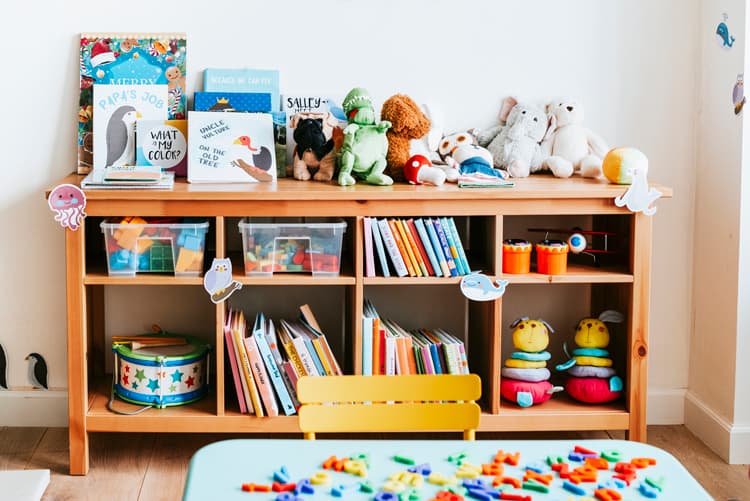
Go through your baby’s toys and discard anything with chew/bite marks, scratches, or broken or missing pieces. This is the ideal time to get rid of that one toy that makes that annoying noise you always hated!! Bite marks can harbor bacteria and the noisy toy can harbor bad feelings. Only save what is really going to be used in the future. Remove any batteries to prevent corrosion or leaking, which may damage the toy. Disinfect toys by spraying them with a baby friendly sanitizing spray like CleanSmart Toy Disinfecting Spray or toss hard toys into the washing machine in a mesh bag.
If you have bath or water toys that you would like to keep, make absolutely sure there is no mold inside. Bath toys can start harboring mold quickly. Before putting them away, give them a dip in a water and bleach solution, making sure to squeeze the air out and releasing once they are submerged in order to fill the toy with your cleaning solution. Dry completely before storing them in an airtight container. To prevent mold before it starts, cover the air hole in your water toys with a dollop of hot glue!
Store baby items like toys in lidded storage containers with clear labels, either by type (legos, Barbies, cars etc.) or by age, so you can take out one tub at a time.
Best way to store cribs, swings and other furniture:
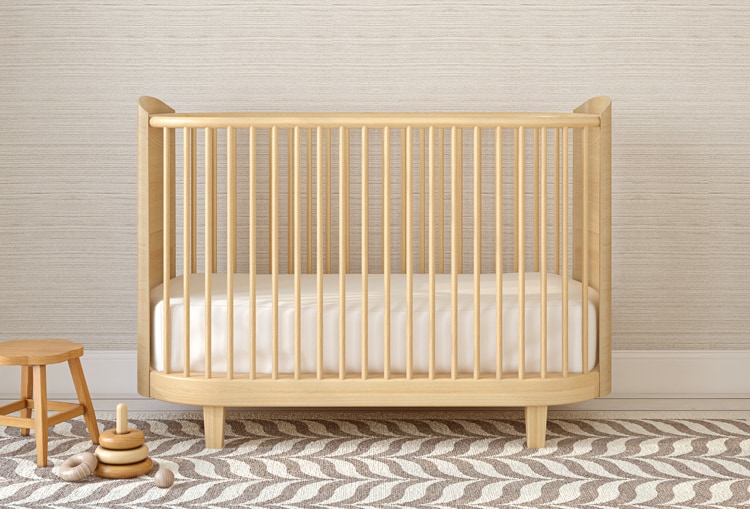
Before storing large items, consider whether new technology will render the item outdated later. Evaluate the items for safety and recalls, and only keep what you really need. Take pictures of the items assembled and as you unassemble them. You’ll thank yourself later when you need to reassemble!
Break down swings, changing tables, and cribs into smaller, more manageable pieces and keep all the hardware in small plastic bags taped to the items. Wipe down hard surfaces to remove dust and dirt. Clean soft surfaces, like pads, seats, and straps to prevent mold and bacteria growth.
For larger pieces of furniture, cover with a large bed sheet out of the light. For smaller pieces, store in a plastic tub or coverall bag. Include the hardware, pictures, and reassembly instructions in the storage bags or totes, to make putting the furniture back together less stressful.
Store baby items carefully from the start! It will help to keep your baby gear in pristine condition and ensure that your items are ready for a new baby or resale.
Didn’t store baby items properly last season and now it’s in need of some serious TLC? Give your local baby gear experts at BabyQuip Cleaning a call. They’ll have your gear sparkling and like new in no time!
Sarah Huff is a mama of two beautiful boys and is the Customer and Community Support Manager for BabyQuip. She proudly helps traveling families and local grandparents by providing high-end baby gear rentals. Sarah takes pride in her inventory, ensuring that everything she rents passes strict cleaning and quality standards! Sarah also LOVES cleaning baby gear and it shows! She cleans the dirtiest, grimiest, stickiest, crumb-filled car seats and strollers and gets them sparkling clean and sanitized. Shes a certified cleaning expert!

This blog is brought you by a BabyQuip Quality Provider. QPs earn extra income by renting and delivering baby gear to families who don’t want to haul bulky gear while traveling…and sometimes also help write blogs about fun, family-friendly things to do in their cities! If you’re interested in learning more about starting a side gig with BabyQuip we would love to hear from you! Follow this link: www.babyquip.com/signup

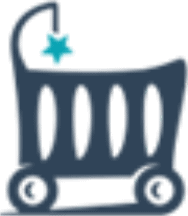
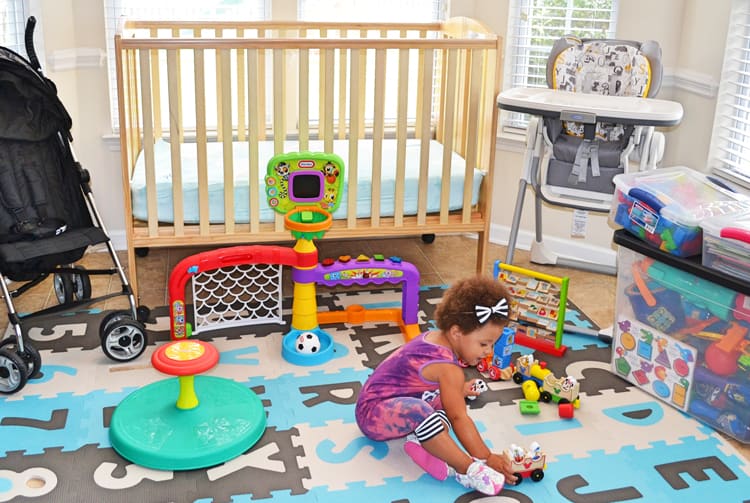
The last thing you want to find is mold on your expensive gear!
Thank you for such a great article! We all need to take care of what we have and reuse, and reuse (or rent!) and do our part to save the planet!
I never thought about cleaning my kid’s items before storing them. It’s a good idea because when I get them out after winter I never clean them. lol
Very useful. It’s great informaion
The stroller hooks! OMG! Genius.
Great job! It’s so helpful to tape hardware to cribs and so important to inspect car seats before use (and sometimes, periodically, during use). I’ve definitely had to contact manufactures before new babies because the old car seat had some wear on it.
Do you recommend trying to clean bath toys or tossing them? Does the bleach solution actually work?
I’ve never seen those stroller hooks before, they look perfect for storing those kinds of items- thanks for the link!
The ‘2500 little baby socks’ comment made me laugh out loud. How is it that every parent accumulates so many baby socks?!!!
So many things here I don’t do. Ugh, adding more things to my list.
I do use a lot of bins and then I rotated it frequently…
Oooh, these are super useful. Breastmilk bags are scattered all over my freezer. Love the box idea!!!!
Great article! I wish I had packed away my kids clothes and blankets this way. After 20+ years stored in plastic totes in a leaking garage there wasn’t much I could salvage when my first grandchild arrived.
Using shoe racks for toys is genius. I would have never thought of that and I already have way too many plastic tubs full of my kid’s toys lol.
Great ideas! Storing items for future babies can be stressful, but you laid it out so well!